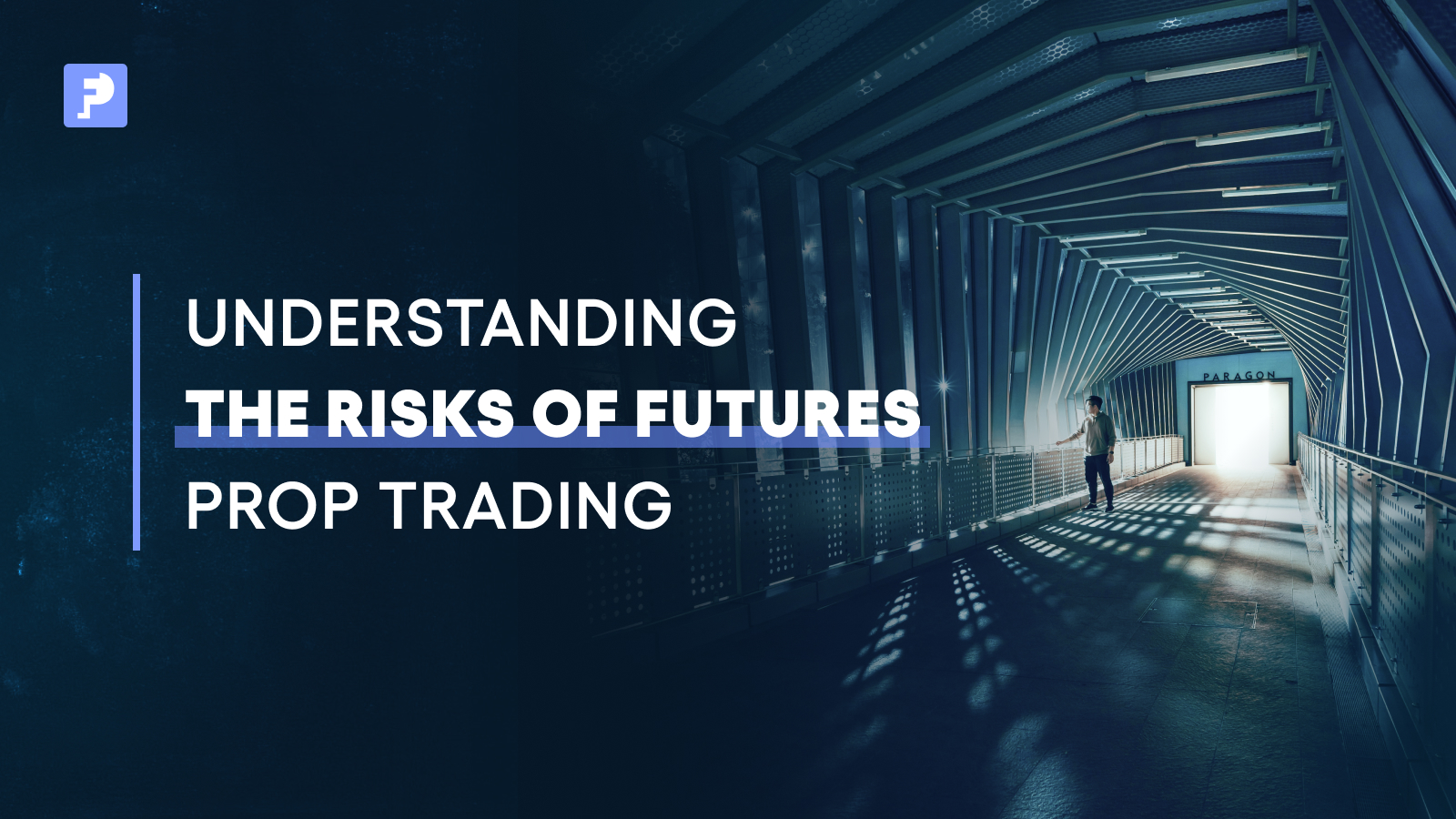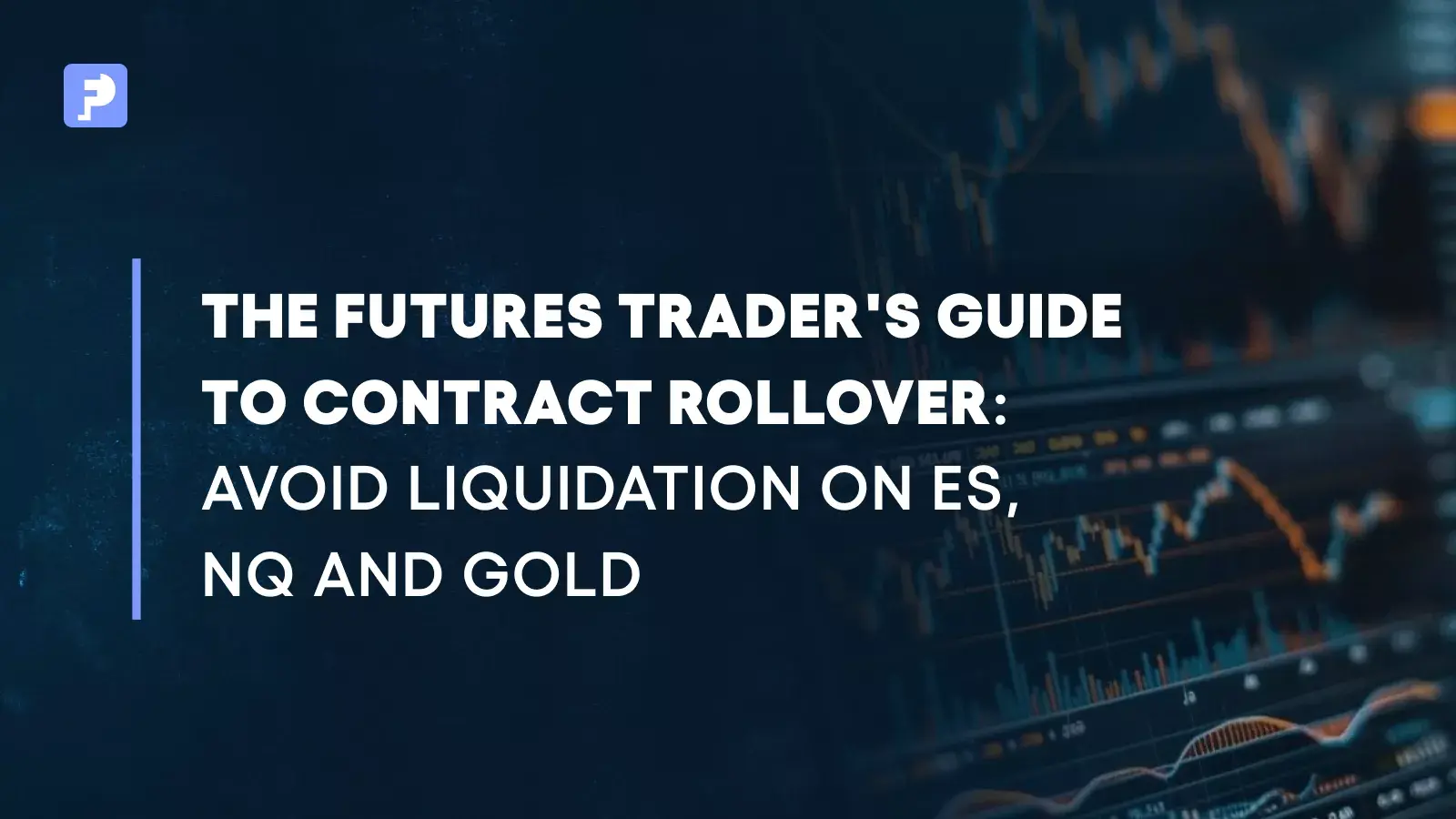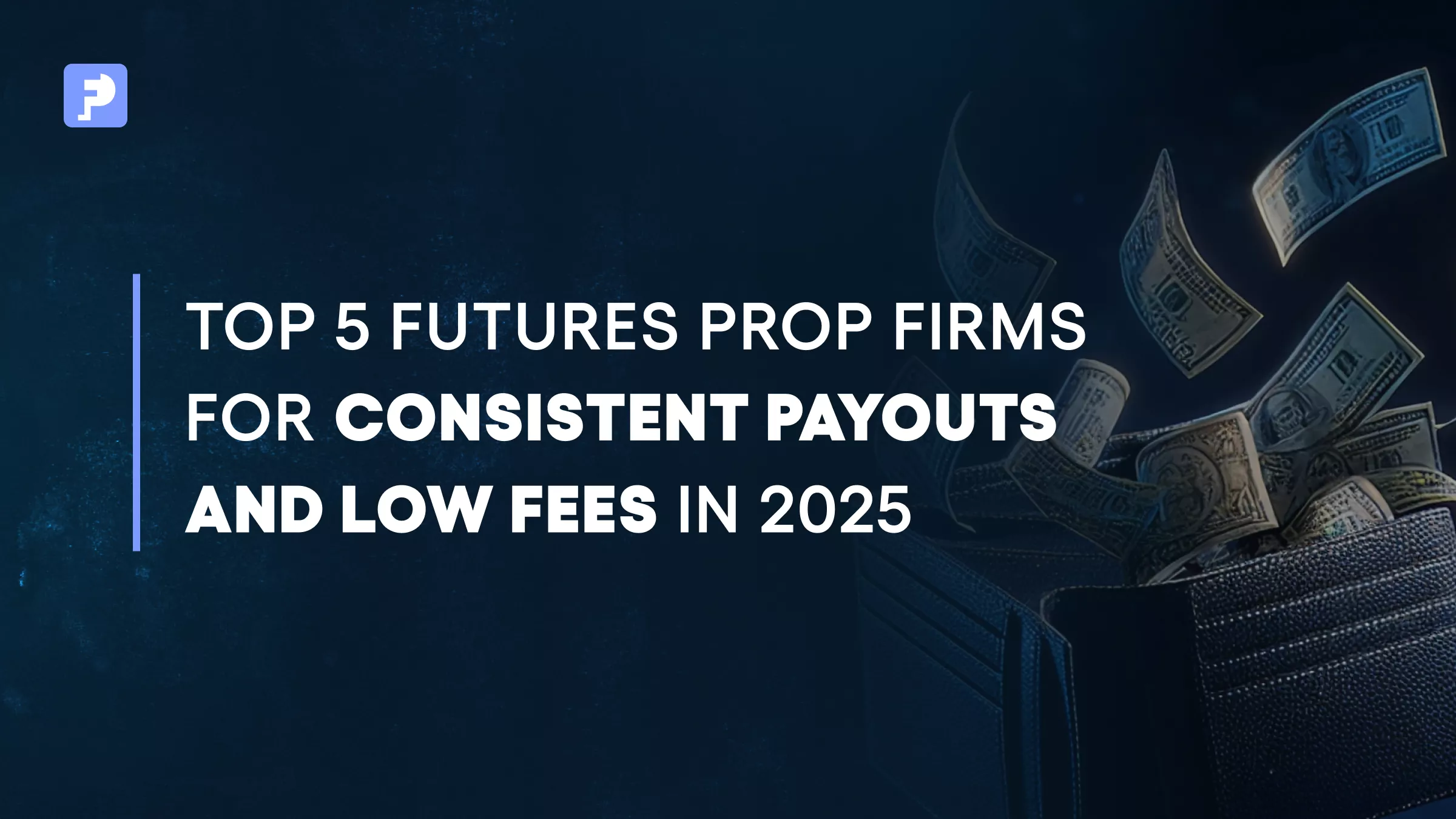
Understanding the Risks of Futures Prop Trading
Futures proprietary (prop) trading offers experienced traders the opportunity to trade large positions with capital provided by a prop firm. Although using a firm’s capital reduces personal financial exposure, it does not eliminate risk—in fact, the very features that make futures attractive (such as leverage and rapid execution) can also amplify losses. In this guide, we’ll explore the key risks of futures prop trading and offer real-world examples and concrete strategies to help you mitigate these dangers.
What Is Futures Prop Trading?
Futures prop trading involves trading standardized futures contracts using a firm’s capital rather than your own money. To gain access, traders typically must pass a rigorous evaluation process where their trading strategy, risk management skills, and discipline are tested on simulated or live accounts. Once approved, they are given access to a funded account, enabling them to take larger positions than they might manage with personal funds.
Because you’re trading with someone else’s money, firms impose strict performance metrics and drawdown limits. If you trigger margin calls or exceed your allowable losses, you risk having your trading privileges revoked or being removed from the program. While these arrangements reduce personal financial liability, they add layers of institutional risk that you as a trader must manage effectively.
If you want to know more about getting funded with a futures prop firm, read our step-by-step guide on how to get a funded account.
Key Risks in Futures Prop Trading
When trading futures prop accounts, several risks come into play. Here are the main discussion points and what they mean for you as a trader:
1. Leverage and Margin Calls
Leverage is perhaps the most prominent risk in futures trading. In a futures contract, you typically post only a fraction of the contract’s total value as initial margin. For example, if a crude oil futures contract is worth $50,000 and the required margin is 10%, you only need to deposit $5,000. This leverage means that even a small adverse movement in price can quickly lead to significant losses relative to your margin.
Concrete Example:
Imagine you’re trading with a prop firm that provides you with a $100,000 funded account. You decide to take a position in E-mini S&P 500 futures, each having a notional value of $50,000 with an initial margin of $5,000 per contract. With your account, you open 10 contracts—using $50,000 in margin. A 1% drop in the index might result in a $500 loss per contract (1% of $50,000), totaling $5,000, which is 10% of your margin deposit. If the market moves 2%, your losses double, and you could trigger a margin call. In a prop trading setting, if you cannot quickly replenish that margin (or if the firm’s risk parameters force liquidation), you might be removed from the trading program.
Key Takeaway:
While leverage can amplify profits, it also means that losses are magnified. Always monitor your positions closely and use stop-loss orders to protect against unexpected downward price moves.
2. Market Volatility
Futures markets are known for their rapid price changes. Market volatility is driven by economic news, geopolitical events, changes in supply and demand, and even investor sentiment. For prop traders, volatility can be both a friend and a foe—providing opportunities to profit, but also risking rapid and potentially catastrophic losses.
Concrete Example:
Consider a futures contract on natural gas. If a sudden geopolitical event causes natural gas prices to spike 5% in minutes, your highly leveraged position could result in losses that far exceed initial margin deposits. If you had a position that was well within your risk parameters under normal conditions, such an event could trigger automatic margin calls and force a rapid exit from positions, possibly at unfavorable prices.
Risk Management Tip:
In volatile markets, it’s crucial to reduce position sizes and tighten stop-loss orders. This helps protect your account even when prices swing rapidly.
Learn more about how economic data and news impact futures trading by reading our dedicated article.
3. Overtrading and Emotional Decision-Making
Even skilled traders can fall prey to psychological pitfalls. In the competitive environment of prop trading, the excitement of using firm capital can lead to overtrading—taking on too many positions in a short period—which increases risk exposure. Emotional decision-making can make you deviate from your carefully crafted trading plan, leading to impulsive trades that do not align with your risk limits.
Concrete Example:
A trader, excited after a few winning trades, might feel invincible and begin taking on extra contracts without adequate analysis. If the market suddenly reverses, those additional positions may quickly multiply losses. Overtrading not only depletes capital faster but can also trigger a cascade of margin calls if losses accumulate in multiple positions simultaneously.
Best Practices:
- Stick to a Trading Plan: Define clear rules for entry and exit points, and commit to them regardless of temporary market fluctuations.
- Use Trading Journals: Record your trades, and review them periodically to understand if emotional decisions are skewing your performance.
- Implement Automated Stops: Use stop-loss orders that trigger automatically to help curb emotional trading decisions.
4. Liquidity Risks
Liquidity risk in futures trading refers to the potential difficulty of buying or selling a contract without causing a significant impact on the price. Even highly liquid markets can experience temporary shortages of liquidity, especially during times of extreme market stress or when trading specialized contracts offered by prop firms.
Concrete Example:
Suppose you are trading a niche commodity futures contract that does not have as many buyers and sellers as more popular contracts. If you try to exit a large position quickly, you may only be able to do so at a very wide bid-ask spread—meaning you sell at a much lower price than expected. This slippage can lead to losses that exceed normal expectations. In a prop trading context, where positions might be scaled up, even a slightly illiquid market could force you to exit at an unfavorable price.
Mitigation Strategies:
- Stick to Liquid Contracts: Focus on trading futures on major indices or commodities that are known for high liquidity.
- Monitor Bid-Ask Spreads: Use analytical tools to gauge the liquidity levels and adjust position sizes if the market appears thin.
- Avoid Large Orders in Illiquid Markets: Breaking up large orders or using algorithmic trading to minimize market impact can help reduce liquidity risk.
6. Risk of Overextending Capital
A common pitfall for prop traders is overextending capital by taking positions that are too large relative to the funded account. Even though the capital is provided by the firm, you are still accountable for your trading performance. Overextending can lead to forced liquidations if market moves exceed your risk thresholds. Many prop firms implement strict drawdown limits to protect both the trader and the firm, and breaching these can lead to termination of your trading privileges.
Concrete Example:
Assume you have a prop trading account with $150,000 of firm-provided capital. If you choose to utilize nearly all of that capital by taking on multiple large positions and then the market moves 3% against you, you might quickly see losses that approach or exceed the firm’s drawdown limits. In such a case, the prop firm may have no choice but to liquidate your positions to preserve the account’s value, ending your trading session and possibly even your tenure with the firm.
Many firms have a cap to the maximum number of contracts per trade, but you can still lose a lot by trading close to that limit.
Risk Control Strategies:
- Follow Strict Position Sizing Rules: Limit the percentage of your account at risk on any single trade. A common rule is to risk no more than 1%–2% of the capital on one trade.
- Adhere to Firm’s Drawdown Limits: Understand your firm’s drawdown policy and plan your trades accordingly to ensure that losses remain within acceptable bounds.
- Regularly Review and Adjust: Frequently review your open positions and overall exposure. Adjust your trade size as your account balance changes due to winning or losing trades.
To learn more, make sure you read our article on how prop trading can help you manage your overall risk in trading futures.
Best Practices for Managing Risks in Futures Prop Trading
To help mitigate these risks, here are some best practices you should integrate into your trading routine:
Develop and Follow a Trading Plan
Outline your entry and exit criteria, position sizing rules, and stop-loss levels before trading. A strict plan prevents impulsive decisions under pressure.
Start Small
Especially when using a prop account, begin with a conservative exposure. As you build confidence and experience while staying within drawdown limits, you can gradually increase your positions.
Use Automated Risk Management Tools
Implement stop-loss and trailing stop orders. Automated orders remove emotional biases by exiting positions once they hit predefined levels.
Regularly Monitor Positions
Maintain constant awareness of market conditions, and adjust stops and size of positions accordingly.
Understand the Rules and Drawdown Policies of Your Prop Firm
Every firm has its own risk controls. Make sure you fully understand your firm’s policies regarding margin calls, drawdown limits, and evaluation processes.
Emotional Discipline
Recognize when your emotions are driving your decisions. Taking breaks, using trading journals, and possibly even speaking with a mentor can help you maintain a disciplined approach.
Conclusion
Futures prop trading provides a unique platform for skilled traders to leverage firm-provided capital, allowing for potentially high returns in the fast-paced world of futures markets. However, the risks are equally significant. High leverage and the potential for margin calls mean that even small adverse movements can lead to outsized losses. Volatility in the markets, coupled with the psychological challenges of overtrading and emotional decision-making, can further jeopardize positions. Additionally, liquidity risks and counterparty concerns underscore the importance of a disciplined risk management strategy.
By understanding these risks you are better prepared to approach prop trading with the seriousness it requires. Adhering to a well-thought-out trading plan, employing risk management tools, and constantly educating yourself can help mitigate these risks and improve your chances of long-term success.
For any trader considering futures prop trading, the key is not to shy away from risk entirely but to manage it effectively. Developing rigorous trading discipline and having a deep understanding of the mechanics involved can make the difference between success and failure in this high-stakes environment.
Remember: Always trade within your limits, use the educational resources available, and continuously monitor your performance. With disciplined practice and smart risk management, futures prop trading can be a rewarding, if challenging, venture.
All trading in FunderPro Futures takes place in a demo-style environment and in off-exchange futures.



